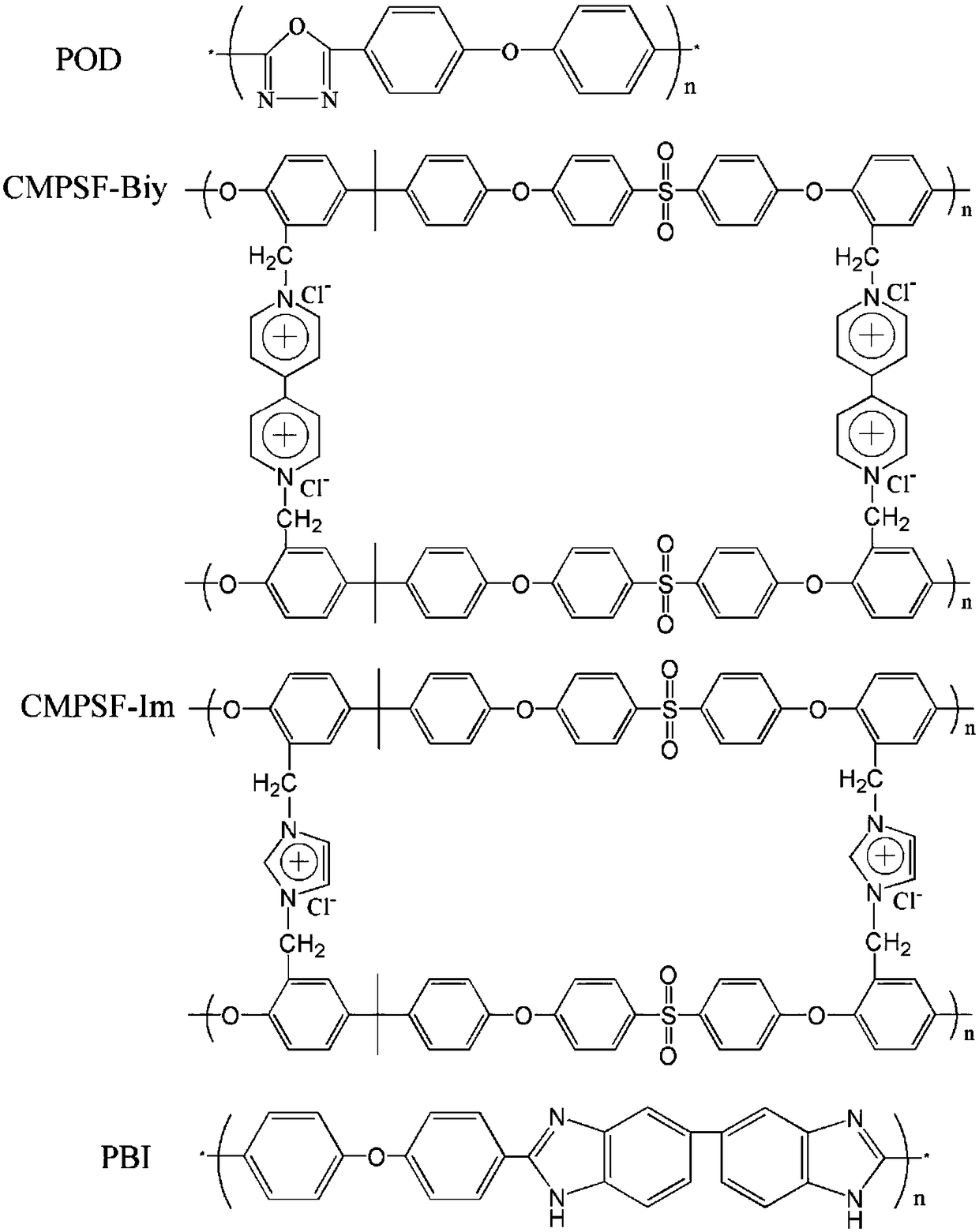Alkaline zinc-iron flow battery
A liquid flow battery, zinc-iron technology, applied in the direction of alkaline electrolyte, fuel cell, battery electrode, etc., can solve the problems of low electrochemical performance, complex structure, poor stability, etc., and achieve good application prospects, high power density, The effect of high energy density
- Summary
- Abstract
- Description
- Claims
- Application Information
AI Technical Summary
Problems solved by technology
Method used
Image
Examples
Embodiment 1
[0052] Dense film of nitrogen-containing heterocyclic polyoxadiazole (POD), the positive electrolyte is 0.6mol / L Fe(CN) 6 4- +3mol / LOH - solution; negative electrode electrolyte is 0.3mol / L Zn(OH) 4 2- +3mol / L OH - solution; the positive and negative electrolyte volumes are 60mL each; the battery adopts constant current charge and discharge mode, at 80 mA cm -2 Charge for 10min under the condition of the current density, and then cut off the voltage as the condition, 80mA cm -2 Discharge to 0V under the condition of current density. According to the charge and discharge curve of the battery, the discharge voltage of the battery is about 1.76V, and the CE, EE and VE of the battery are about 99%, 81% and 82% respectively. Within 70 cycles, the charge-discharge capacity and charge-discharge energy of the battery remained stable, and the battery performance did not show significant attenuation.
Embodiment 2
[0054] The imidazole-crosslinked chloromethylated polysulfone porous ion-conducting membrane (CMPSF-Im) of branched chain nitrogen-containing heterocycles, the battery test conditions are consistent with the battery test conditions assembled with POD membranes. It can be seen from the charge-discharge curve of the battery that the polarization of the battery is lower than that of a single cell assembled with a POD membrane. Therefore, in addition to having high ion selectivity (CE~99%), its ion conductivity is also high, and its VE is about 82%. . This may be because the pore structure in the porous membrane is conducive to the liquid holdup in the membrane and thus to the ion conduction. Within more than 100 cycles, the charge and discharge capacity and charge and discharge energy of the battery remained stable, showing good stability and battery performance.
Embodiment 3
[0056] The 4,4'-bipyridine cross-linked chloromethylated polysulfone ion-exchange membrane (CMPSF-Biy) with branched nitrogen-containing heterocyclic rings, the battery test conditions are consistent with the battery test conditions assembled with POD membranes. According to the charging and discharging curve of the battery, the polarization of the battery is higher than that of the single battery assembled with POD film, and the VE of the single battery assembled with it is about 78%, and the CE is about 99%. Although the VE of this type of film is low in alkaline zinc-iron batteries, the battery assembled with it has good cycle stability. After more than 100 cycles, the charge-discharge capacity and charge-discharge energy of the battery remain stable.
PUM
 Login to View More
Login to View More Abstract
Description
Claims
Application Information
 Login to View More
Login to View More - R&D
- Intellectual Property
- Life Sciences
- Materials
- Tech Scout
- Unparalleled Data Quality
- Higher Quality Content
- 60% Fewer Hallucinations
Browse by: Latest US Patents, China's latest patents, Technical Efficacy Thesaurus, Application Domain, Technology Topic, Popular Technical Reports.
© 2025 PatSnap. All rights reserved.Legal|Privacy policy|Modern Slavery Act Transparency Statement|Sitemap|About US| Contact US: help@patsnap.com



